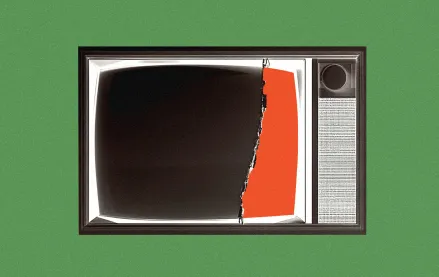
Tom Stockham needed to buy a wireless router. He searched the term on Amazon, where he found thousands of search results with ratings but couldn’t find answers to his specific questions, like how the devices stacked up in range, signal strength and bandwidth. So he headed over to a Best Buy store, where, after a sales rep answered his questions and confirmed Best Buy’s price for the Linksys Max-Stream wireless router was the same as Amazon’s, he bought it without hesitation. “It was great experience,” said Stockham.
Stockham had a little bit to do with that experience. He’s the CEO of Experticity, a company that had provided product training to Best Buy’s Learning Network, an employee learning and training portal. To compete with Amazon, Best Buy has been stepping up its focus on helping people buy complicated products. Its Geek Squad helps shoppers with technology questions and product repairs in stores and at home. Its shop-in-shop program gives suppliers like Microsoft and Samsung real estate inside Best Buy, where supplier-hired sales associates and Best Buy’s agents are steeped in product knowledge.
“Best Buy didn’t simply say, ‘We have stores and Amazon doesn’t,’ which is how many brick-and-mortar retailers have approached the Amazon question,” said Jared Blank, svp of data and retail insights for marketing firm Bluecore. “Rather, it focused on what those stores could actually provide that was a significant benefit over shopping at Amazon.”
With revenue falling and operating costs climbing, Best Buy was losing money in 2012. The same year, Best Buy brought in hospitality executive Hubert Joly as its new CEO. He introduced a turnaround plan called Renew Blue, which prioritized online sales and the shopping experience. Net income increased from a loss of $433 million in fiscal year 2013 to a profit of $1.2 billion in fiscal year 2017, according to MarketWatch.
Best Buy expanded its online product assortment in consumer electronic and household appliance categories, said Frank Poore, CEO and co-founder of distributed commerce network CommerceHub.
It also responded to the “showrooming” phenomenon — when shoppers check out a product in a brick-and-mortar store but then buy online — by matching the prices of its rivals, especially Amazon. “Best Buy figured out that if the service in store was amazing and the price was the same as Amazon, people would buy at Best Buy. And they have,” said Blank.
With its shop-in-shop program, Best Buy is taking a page from the Apple store, with its reputation for customer service, according to Michael Klein, Adobe‘s head of retail. Jenny Fawcett, gm of channel sales for Microsoft, a shop-in-shop partner, said Best Buy was one of the first retailers to introduce this model at scale. The program also benefits suppliers that don’t have as big a retail footprint as Best Buy does.
“Best Buy is a complete shock because when you look at companies like RadioShack, you would think that the [electronics] industry is in trouble,” said Emily Wengert, group vp of user experience for agency Huge. “Best Buy sells highly commoditized electronic products that are available elsewhere. With price and product function being similar, customer experience is a great differentiator. Best Buy is more of a service platform than a retail company.”
This year, Best Buy is moving from Renew Blue to a phase it calls “Best Buy 2020.” As part of that phase, Best Buy plans to roll out a service where staffers will go to consumers’ homes to explain the benefits of potential upgrades to their electronic devices. Best Buy is testing the service in Atlanta; Austin, Texas; Orlando, Florida; San Antonio; and Washington, D.C.
Amazon itself seems to be taking a page from Best Buy. The e-commerce giant is rolling out its own Geek Squad-style offering, where its in-house experts provide free consultations about its voice platform Alexa and product installations for a fee. As Amazon opens more physical stores, Best Buy may have another fight on the horizon.
More in Marketing

Pitch deck: How Amazon is recasting Twitch as a core part of its CTV pitch
Amazon is positioning Twitch as a defining asset in its CTV ambitions.

Netflix transforms former mall department stores into experiential venues
The location in Dallas opens this week, and one at the King of Prussia mall near Philadelphia opened last month.

Future of Marketing Briefing: AI has created a new talent paradox in programmatic agencies
The job isn’t execution anymore. AI handles that. The job is judgement.








